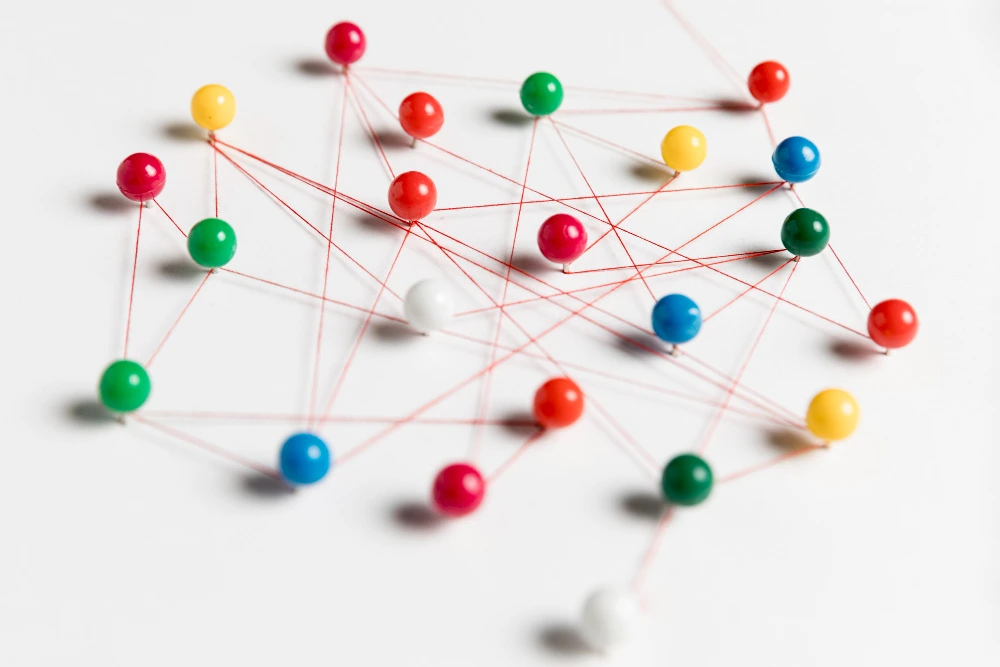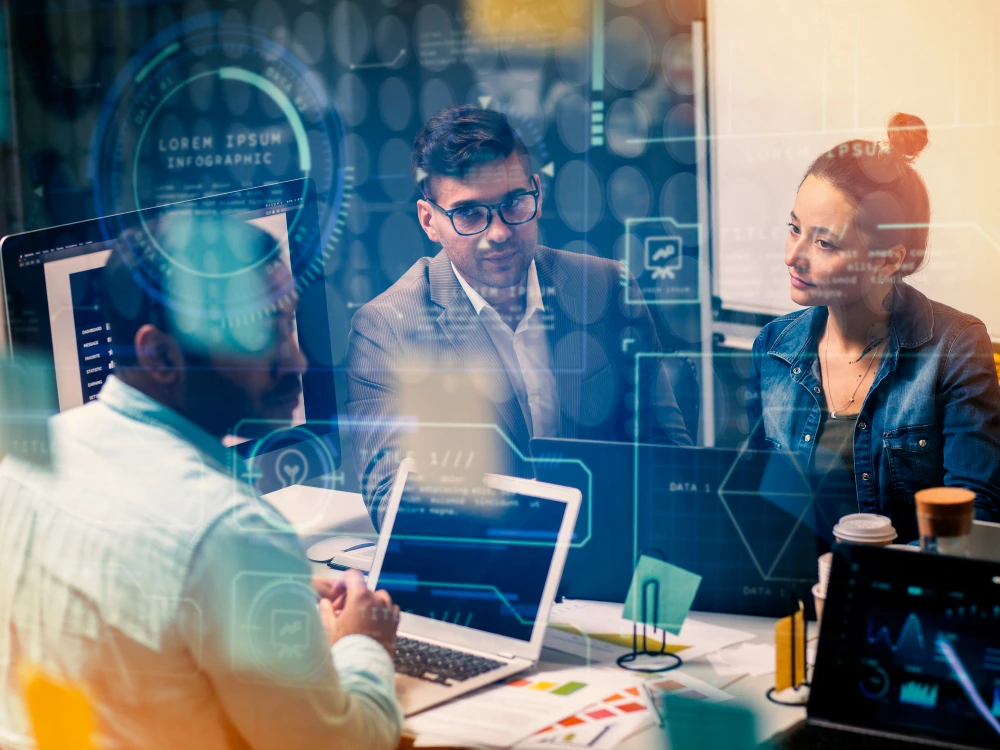In today’s rapidly changing world, learning and adapting is paramount for individuals and organizations. One key strategy to achieve this is through skill adjacency. This concept revolves around identifying and developing skills closely related to one’s existing skills. By leveraging skill adjacencies, individuals and organizations can stay competitive and navigate the ever-evolving job landscape.
What is Skill Adjacency?
Skill adjacency is not just a theoretical concept; it’s a practical tool for your professional toolkit. Skill adjacency refers to the interconnectedness between different skills, acknowledging that certain skills have a natural overlap. Understanding one skill can facilitate the learning of another, creating a web of interconnected skills that you can use in your daily work.
Skill adjacency refers to the interconnectedness between different skills, acknowledging that certain skills have a natural overlap.
Why is Skill Adjacency Important?
There are several compelling reasons to embrace skill adjacencies:
- Faster Learning: A foundational understanding of existing skills allows for quicker acquisition of adjacent skills. Imagine a graphic designer already familiar with design principles who wants to learn animation. Their design knowledge creates a skill adjacency, making animation software and storytelling elements easier to grasp.
- Increased Adaptability: Drawing upon multiple connected skills allows individuals to adjust to changing job requirements and take on new challenges. A marketing professional with strong data analysis skills can leverage this skill adjacency to transition into a marketing analytics role.
- Enhanced Efficiency: When skills are interconnected, individuals can work more efficiently by integrating them to solve problems and complete tasks. A project manager with strong communication skills can utilize this skill adjacency to manage client expectations more effectively.
Importance of Skill Adjacency
– Faster Learning
– Increased Adaptability
– Enhanced Efficiency
Lifelong Learning: Fueling Skill Adjacency
Lifelong learning is the continuous pursuit of knowledge and skill development throughout one’s life. This ongoing learning process is essential to maximize the benefits of skill adjacency. Here’s why:
- Expanding Skill Inventory: Lifelong learning allows individuals to continuously add new skills to their repertoire, creating a broader network of potential skill adjacencies. This expanded skillset opens doors to new career paths and opportunities.
- Staying Relevant: In a rapidly evolving job market, skills can become outdated quickly. Lifelong learning ensures individuals have the most current knowledge and remain competitive through continuous development and skill adjacency strategies.
- Stimulating Innovation: By continuously learning new things, individuals foster creativity and become adept at problem-solving through novel combinations of existing and newly acquired skills. This fosters innovation and enhances performance through the power of skill adjacency.
Benefits for Organizations: Embracing Skill Adjacency and Lifelong Learning
Organizations that prioritize skill adjacency and encourage lifelong learning enjoy several significant advantages:
- Future-proofed Workforce: By investing in employees’ skill development through skill adjacency training, organizations create a more adaptable workforce to handle future business challenges.
- Increased Innovation: When employees are encouraged to learn and build skill adjacencies, they become better equipped to solve problems creatively and develop innovative solutions.
- Improved Retention: By offering opportunities for growth and development, organizations can improve employee morale and loyalty and reduce turnover.
Benefits of Identifying Skill Adjacency for Organizations
– Future-proofed Workforce
– Increased Innovation
– Improved Retention
Identifying and Leveraging Skill Adjacencies for Individuals
There are several ways individuals can identify and leverage skill adjacencies:
- Self-assessment: Individuals must analyze their current skill set and consider areas they enjoy using. This will help identify underlying strengths and potential skill adjacencies to explore.
- Career exploration tools: Utilize online resources that map skills to related occupations and identify potential career paths based on skill adjacencies
- Networking: Connect with professionals in their field or others they find interesting. Through discussions, they may discover new skills and identify potential skill adjacencies for growth.
The Role of Technology in Skill Adjacency and Lifelong Learning
Technology has become an indispensable tool in pursuing skill adjacency and lifelong learning. It provides platforms for learning, facilitates skill development, and helps individuals and organizations identify and leverage skill adjacencies.
Online learning platforms offer many resources for acquiring new skills and exploring skill adjacencies. Microlearning modules cater to different learning styles and paces. Additionally, interactive tutorials, simulations, and virtual classrooms create immersive learning experiences.
Technology enables personalized learning paths. By analyzing individual strengths, weaknesses, and career goals, AI-driven platforms can recommend relevant courses and projects, fostering the development of skill adjacencies.
Moreover, technology enables personalized learning paths. By analyzing individual strengths, weaknesses, and career goals, AI-driven platforms can recommend relevant courses and projects, fostering the development of skill adjacencies.
How Spire.AI Can Help Leverage Skill Adjacency
Spire.AI is a powerful AI Copilot that can help organizations and individuals capitalize on the benefits of skill adjacency. Let’s see how:
- Auto-Evolving Role-Skill Framework: Spire.AI’s framework utilizes advanced AI powered by a Large Graph Model for Skills to map the intricacies of organizational roles and identify the skill adjacencies necessary for success at different levels. This allows organizations to identify skill gaps and tailor development programs to cultivate skill adjacencies for future needs.
- Automatic Skill Profiles: Spire.AI analyzes data sources to generate employee skill profiles, highlighting their current skillsets and potential for skill adjacency development based on their strengths.
- Career Path Simulation and Reskilling Recommendations: Spire.AI leverages AI to personalize employee career paths by analyzing their existing skills and recommending opportunities for growth through skill adjacency development. This empowers employees to identify and pursue careers that align with their aspirations and skills.
Building a Culture of Skill Adjacency and Lifelong Learning
Organizations that foster a culture of skill adjacency and lifelong learning reap significant benefits. This involves creating an environment where learning is valued, accessible, and encouraged.
- Leadership Buy-in: Strong leadership support is essential for establishing a learning culture. Leaders should champion lifelong learning and demonstrate its importance through their actions.
- Learning Opportunities: Organizations should provide various learning opportunities, such as on-the-job training, mentorship programs, and external workshops.
- Performance Management: Incorporate learning and development goals into performance reviews to emphasize the importance of skill adjacency and continuous growth.
- Knowledge Sharing: Encourage knowledge sharing and collaboration among employees to facilitate the transfer of skills and the identification of skill adjacencies.
Conclusion
Skill adjacency and lifelong learning are inextricably linked. By understanding and leveraging skill adjacencies, individuals and organizations can unlock new opportunities, enhance adaptability, and drive innovation. Technology plays a crucial role in supporting this journey by providing tools and platforms for learning and development.
Building a culture of skill adjacency and lifelong learning is essential for organizational success in today’s dynamic landscape. By investing in employee development and creating an environment that fosters continuous growth, organizations can cultivate an agile, innovative, and prepared workforce.
Spire.AI is at the forefront of enabling organizations to harness the power of skill adjacency. With its advanced AI capabilities, Spire.AI provides valuable insights into skill gaps, identifies potential skill adjacencies, and recommends personalized learning paths. By leveraging Spire.AI, organizations can optimize talent management strategies and build a high-performing, future-ready workforce.
In summary, skill adjacency is a powerful concept that can drive individual and organizational success when combined with lifelong learning. By embracing this approach and leveraging the right tools, organizations can position themselves for long-term growth and competitiveness.
Frequently Asked Questions
What is an adjacent skill?
An adjacent skill is a skill that has a natural overlap with another skill you already possess. Learning one skill can make it easier to learn an adjacent skill.
What is skills alignment?
Skills alignment refers to how well your skills match the requirements of a specific job or role as well as the organizational goals. It involves identifying skill gaps, developing talent, and optimizing workforce allocation.
What does skill centric mean?
Skill-centric refers to an approach that prioritizes skills and competencies over traditional job roles. It focuses on developing and utilizing employee skills to drive business outcomes.
What is skill adjacency?
Skill adjacency is the interconnectedness between different skills. It acknowledges that certain skills have a natural overlap and can be used together effectively.






